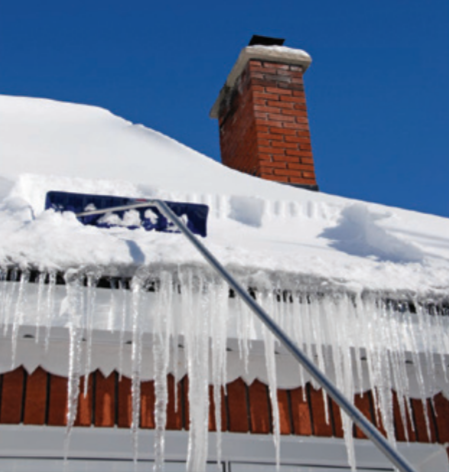Safer Ways to Remove Snow from Roofs
Every year, workers are killed or seriously injured while performing snow or ice removal from rooftops and structures such as decks. Based on the findings of OSHA investigations, falls cause the most worker fatalities and injuries during rooftop snow removal. Workers may fall off roof edges, through skylights, and from ladders and aerial lifts to the ground below, which is likely to be fatal. Workers may also be injured or killed by a roof collapse.
Background of Snow Removal
Snow removal is performed for several reasons, such as to prevent overloading and collapse or to construct or repair decking or roofs. Often workers climb directly onto the roofs or structures and use shovels, snow rakes, snowblowers, and ladders to remove snow. But what if there were other ways - safer ways - to remove the snow safely instead of climbing directly on the roof?
Safer Ways to Remove Snow
If possible, other ways to remove snow or ice include staying on the ground level. Working from the ground level eliminates the high-risk fall hazard of working on a roof. There are tools called snow rakes that can be used to remove the snow from the ground. Snow rakes resemble a garden hoe with a long handle. Workers should be instructed to remove small amounts at a time to avoid strain or from being hit or buried by falling snow.
A snow rake removing snow from a rooftop.
Workers could also use scissor lifts or ladders to access the roof to apply de-icing materials. With a scissor lift and ladder, heights are involved, but if the workers use it properly, it is much safer than climbing directly on the snowy and potentially icy roof. Use a scissor lift with a dry and clean platform and ladders with dry and clean steps. Be sure to evaluate loads exerted on a roof or structure, such as the total weight of snow, workers, and equipment used, compared to the load limit of the roofs.
Other Hazards to Look Out For
• Snow removal operations are often performed under extreme weather conditions such as cold weather, high winds, and icy surfaces.
• Workers who perform these activities (for example, building maintenance workers) may have little experience or training on the hazards of such operations or work.
• Amputations, eye injuries, and other injuries are associated with the use of snowblowers and other mechanized equipment.
• Collapses or tip-overs can occur when using aerial lifts.
• Entrapment and suffocation under falling snowdrifts or snow piles are possible.
• Shock or electrocution hazards from contacting power lines or damaged extension cords.
• Frostbite or hypothermia from cold and windy conditions.
• Musculoskeletal injuries from overexertion.


